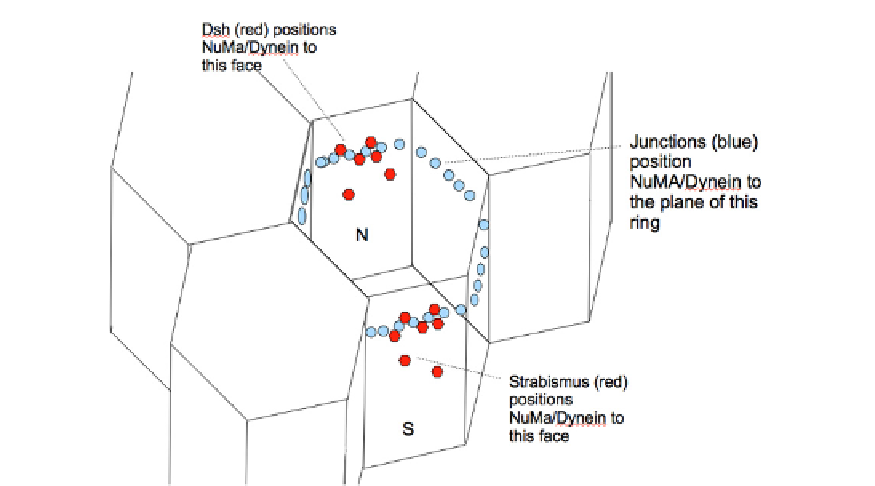Biology Reference
In-Depth Information
FIGURE 23.13
Independent action between the junction-mediated apico-basal positioning system and the
Dishevelled/Strabismus-mediated planar polarity positioning system has the effect of making just two parts of the
cell membrane maximally attractive to (exterting maximum tension on) aster microtubules. These are the areas that
lie within the plane of the junctions and are at the North and South ends of the cell, respectively.
allowing the production of cells by a tissue to align appropriately with changes in shape
driven by other mechanisms such as invagination.
More than a century ago, Oscar Hertwig proposed a simple rule of self-organization that
would cause mitoses in a distorted tissue to orientate themselves automatically in a direction
that would reduce the forces associated with that distortion. Hertwig suggested that the
spindle axis always aligns with the long axis of the cell. An updated formulation of Hertwig's
rule, which would prefix the rule with a qualification such as 'in the absence of overriding
cues', seems to hold in many situations, in culture and in embryos. If a tissue
d
for example
an epithelial sheet
d
is stretched in one direction its cells will also be stretched in that direction
(assuming no rearrangement). Mitoses will therefore take place mainly in that same direction,
so that one stretched mother cell is replaced by two daughter cells. A physical model of the
stability of the mitotic spindle has suggested a simple explanation for Hertwig's rule based
on interactions between the spindle and themicrotubules under the plasmamembrane; repul-
sive forces are least when the spindle poles are in the least cramped parts of the cell.
38
Valuable as it is for ensuring that daughter cells are produced in an orientation that min-
imizes the distortion of cells in an epithelium subjected to external forces, Hertwig's rule can
create positive feedback that exacerbates the instability of shape of an unconstrained tissue in
which mitosis is taking place. If the orientation of mitoses in a tissue were to be completely
random and there were no compensating processes, the resultant expansion of the tissue
would not be isometric but would instead show a cumulative distortion. There are two
reasons for this. First, randomly orientated mitosis of cells in a random sequence would

